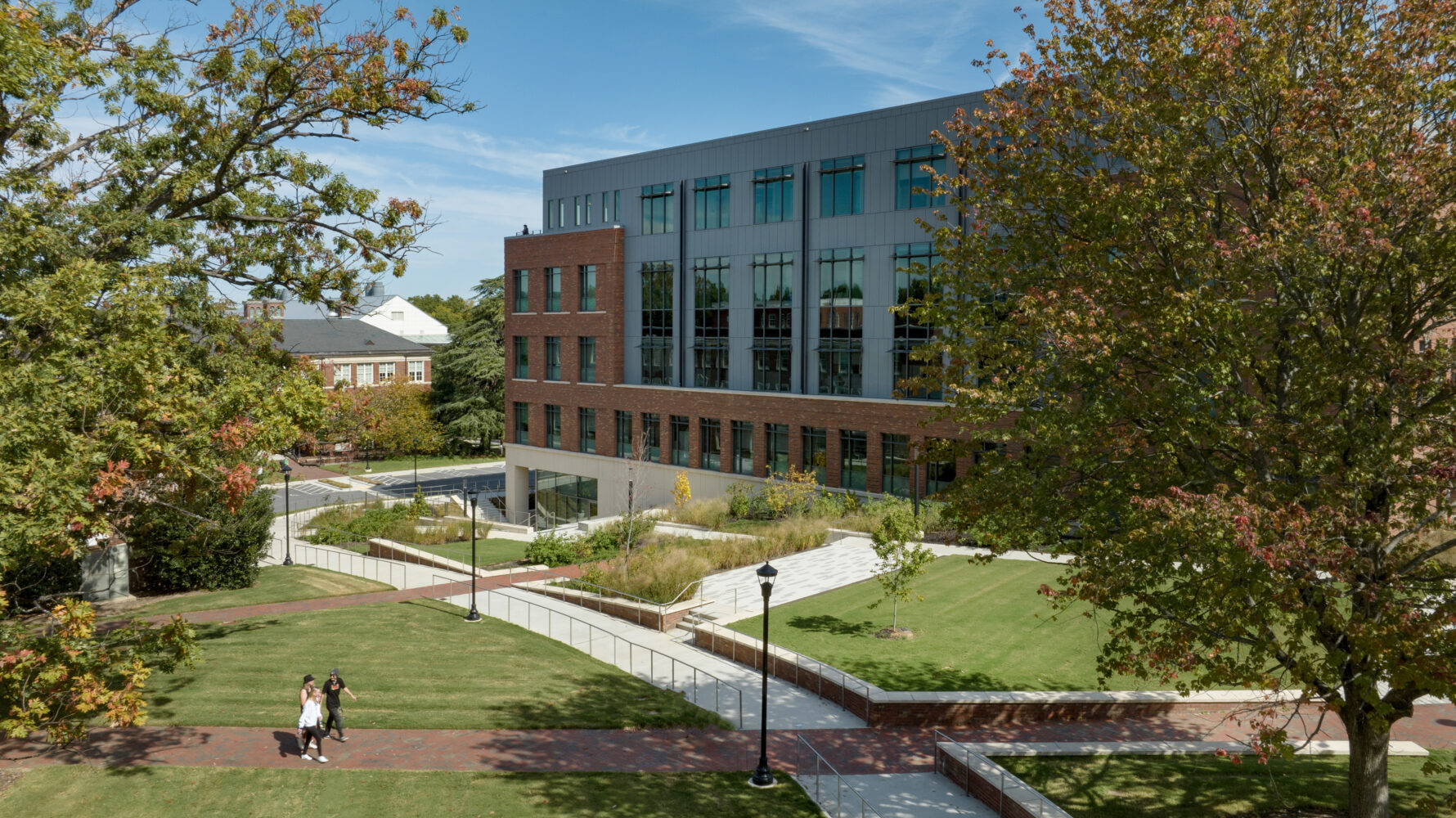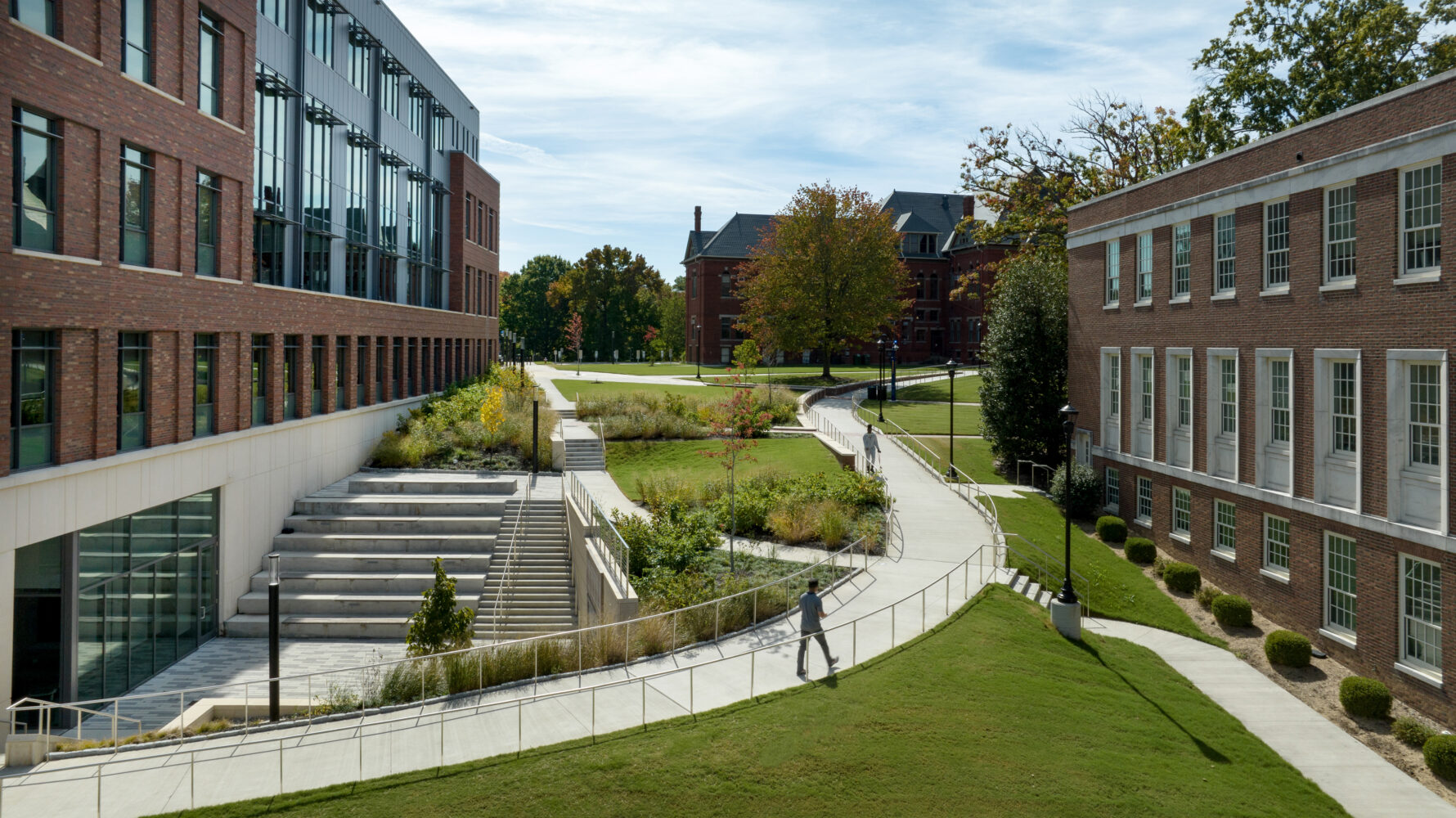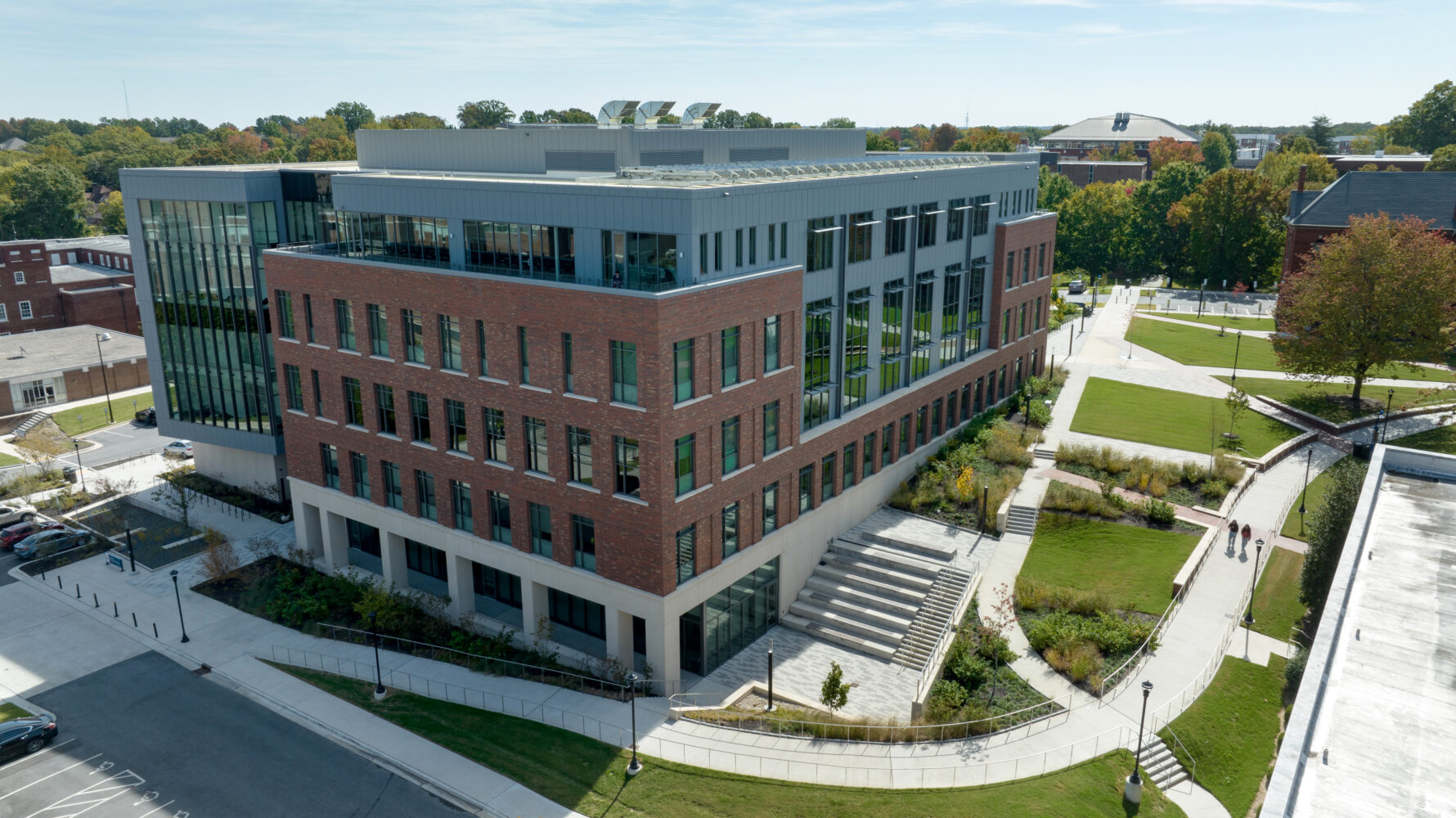College campuses want outdoor spaces to address specific goals around sustainability and inclusivity
In a post-COVID world, experts agree on the many benefits of incorporating outdoor spaces into work environments. Higher education campuses are well aware of these benefits, but they are going a step further to consider the different ways that outdoor environments can address broader organizational goals around climate change and DEI (diversity, equity and inclusion).
Climate change goals
Sustainability initiatives are a top priority for school administrators, who are keenly aware that 74% of college applicants said that an institution’s environmental commitment affects their final decision.
One effective way to incorporate sustainability into campus design is to implement green infrastructure practices that manage stormwater runoff using natural elements like vegetation and soil. These initiatives have important environmental, economic and social benefits, including improving air quality and reducing water pollution.
Stewart’s landscape architects are finding creative ways to incorporate green infrastructure elements into the design of outdoor spaces at universities, recently installing stormwater treatment gardens at the UNC Greensboro School of Nursing.
Inclusive Design
The Centre for Excellence in Universal Design (CEUD) defines Universal design as “the design and composition of an environment so that it can be accessed, understood and used to the greatest extent possible by all people regardless of their age, size, ability or disability.” Colleges are prioritizing inclusive campuses experiences, and designing more accessible outdoor spaces is an impactful way to further this objective.
A few examples of universal design considerations that ASLA recommends include:
- Intersections, lighting and level changes to accommodate people with low vision
- The acoustic environment, lighting and odor present within the built environment to accommodate autistic people who are often overwhelmed by visual stimulation
- Clear and understandable designs to help people with diminished sensory, cognitive and motor skills navigate public spaces
Conclusion
Higher education institutions want outdoor spaces that are truly mission driven, and Stewart is providing practical guidance to help universities incorporate sustainability and inclusivity into the design of their outdoor spaces.





